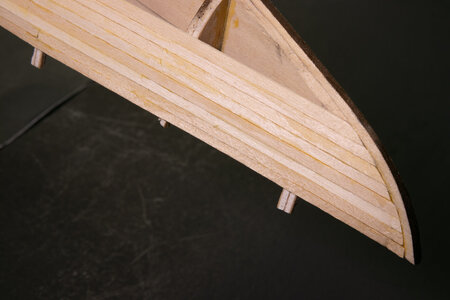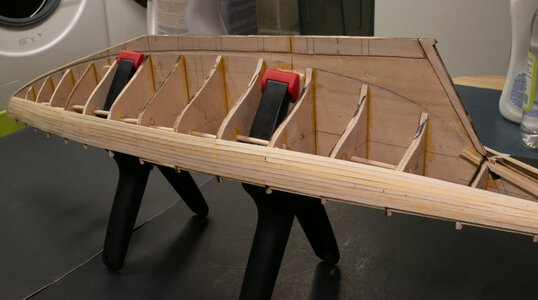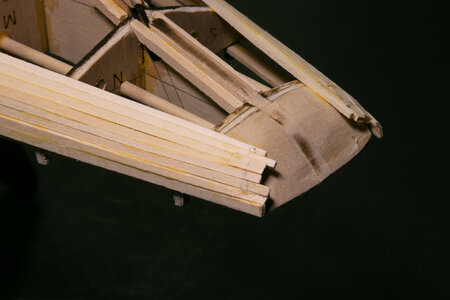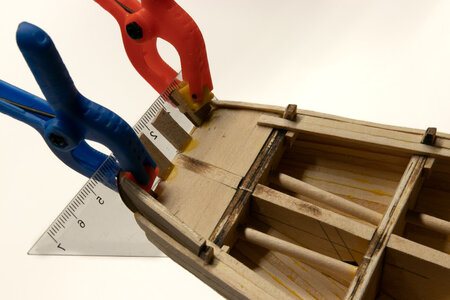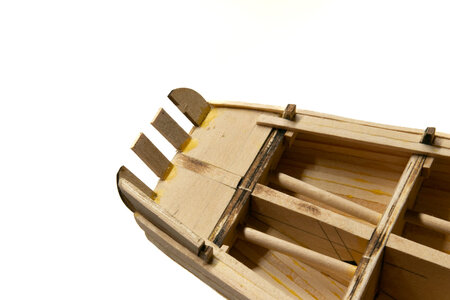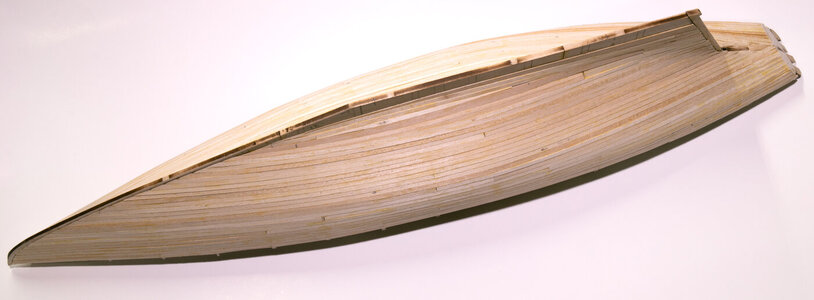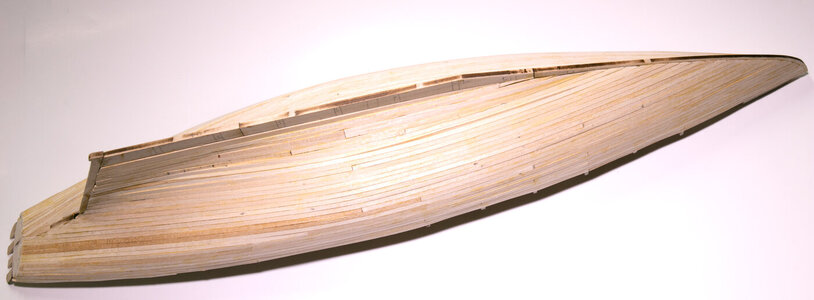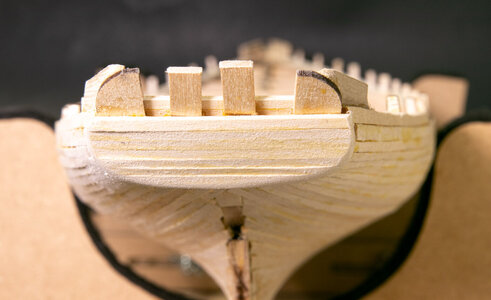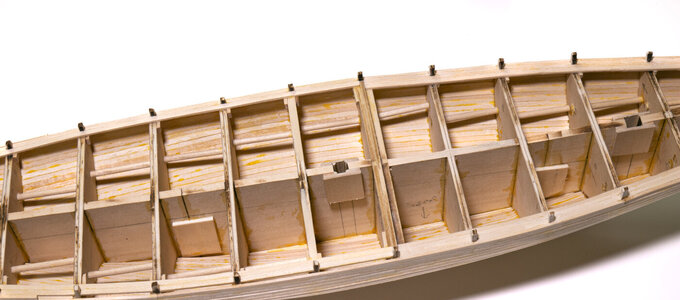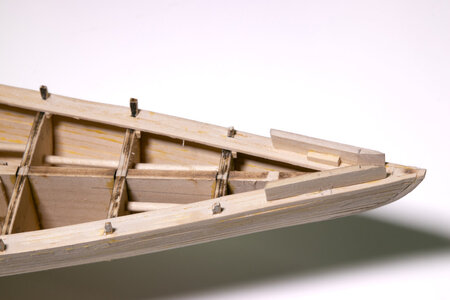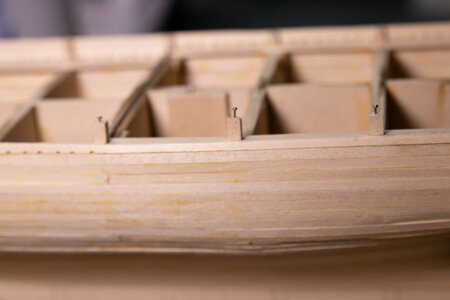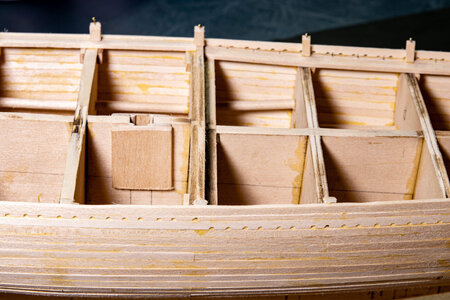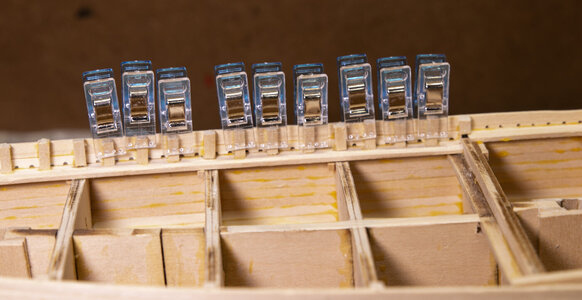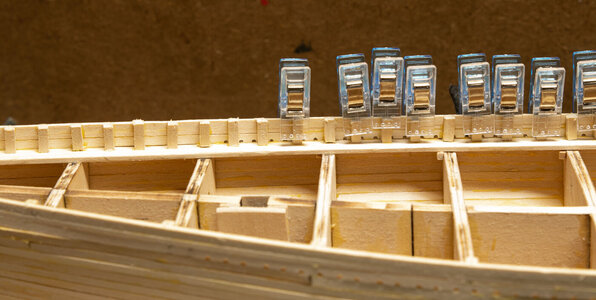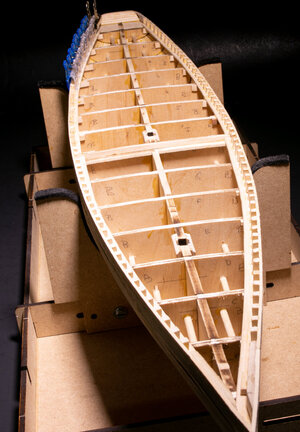- Joined
- Jan 13, 2023
- Messages
- 30
- Points
- 48

I love the lego idea on the bulkheadsTime to work on the bulkheads. First, they were marked with the reference line from the plans. In most cases the reference line coincided with the top of the slot in the bulkhead where it fits to the false keel. The location of the refence line changes some on the bulkheads near the bow & stern and is used to show that the bulkheads are properly aligned during assembly.
View attachment 360935
One problem was noted on bulkhead H. The laser cut line from one side did not match the line cut for the other side. The good news was that the higher line had extra material as opposed to the lower line not having enough material. I used a paper template and marked the correct line on the higher side and sanded down to the line, so the curve for the deck was maintained and that the two sides were even.
View attachment 360936
I did not take very many pictures of the installation of the bulkheads. I used Lego blocks on all four sides of each bulkhead to square the bulkheads with the false keel. You can see the results of the reshaping of the top of Bulkhead H in the picture. Titebond II was used to glue the bulkheads in place.
View attachment 360937
I also decided to strengthen the hull with 3/16" dowels set between each of the bulkheads. I didn't have a drill bit long enough to do more than one bulkhead's width, so I glue the dowels between 2 bulkheads moving the dowels away from the false keel based on the size of the bulkheads.
View attachment 360938 View attachment 360939
Covers for the masts were added to both mast slots in the false keel. The width of the hole is based on the size of the dowels used for the masts.
View attachment 360940
It's not shown here, but I also added some V shaped pieces (1/16"" square sanded down along the diagonal of the square) in the corners of the mast hole to fit the mast dowels more tightly.


